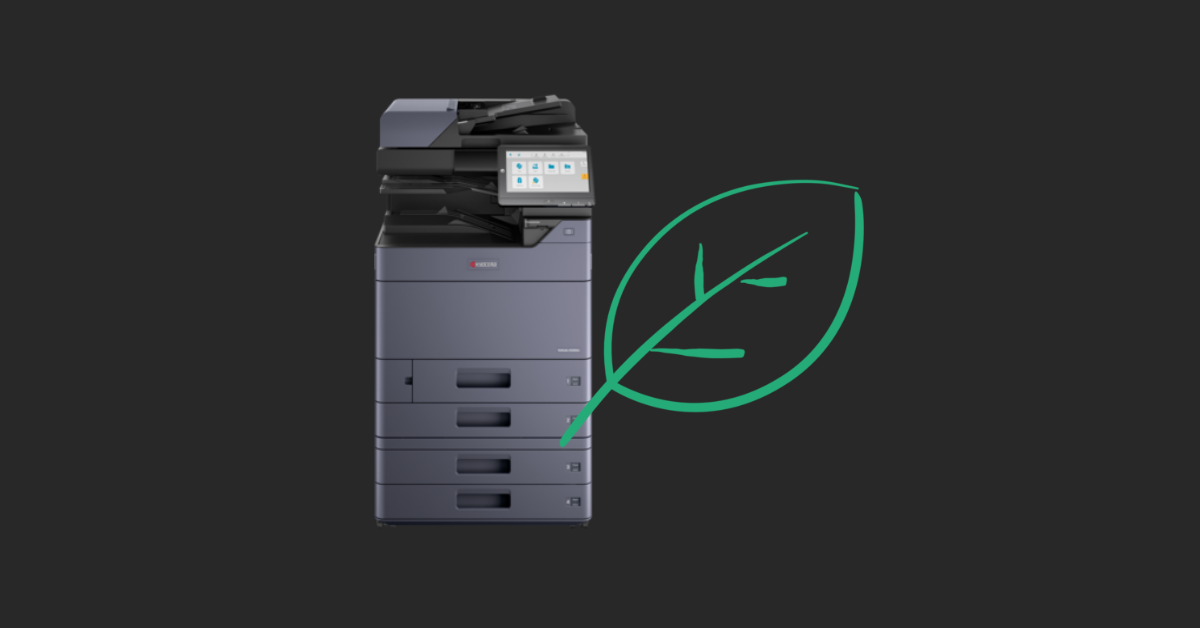4 min read
How to choose an environmentally friendly printer
Investing in an environmentally friendly printer is a key step your organisation can take towards more sustainable business operations, particularly...
Benefit from smart ideas, lower costs, greater productivity. Choose from award-winning printers, software solutions and consumables
Personalised technology solutions to help your organisation gain a competitive advantage
Discover howWe combine professional expertise with a human kind of partnership
Get the right help and advice, register a product and see why our commitment to you matters.
Discover our brand, our global activities and commitments
4 min read
Bill Christoforou 27/06/2022 11:23:34 AM

Students, teachers and families across the country are increasingly looking for schools and educational institutions that incorporate environmentally conscious policies and products. One way for institutions to respond to this and create a more eco-friendly school environment is to switch to sustainable printing practices. Innovative print technologies and management systems can reduce waste, and paper, toner and power consumption, while also lowering running costs in the process.
Here are seven ways to effectively operate a print-heavy network while also contributing to a more eco-friendly school environment.
Having a complete view of your print network means that you can continuously monitor it for ways to improve the sustainability of your school’s printing devices. Unfortunately, in-house printing solutions often lack full visibility of your spending, resource consumption and other print data. This means that it’s more difficult to calculate the current environmental impact of your print network and how you can improve it.
Conversely, a Managed Print Service (MPS) optimises and controls your print management, from the devices in use, to print consumables and software. This takes the work out of forecasting and tracking paper and toner usage while highlighting the opportunities to minimise your environmental impact, through the implementation of print policies including setting black and white defaults to reduce your toner consumption.
Print-release technology is efficient and contributes to more eco-friendly school office practices. It works by placing print jobs on hold until staff authorise and release the job at the printer. This significantly reduces consumable and paper wastage – no more accidental or forgotten print jobs sitting in the output trays, or multiple copies of the same document floating around because you forgot you already printed it. As an added bonus, you’ll improve security in your school as well.
Schools are often print-heavy environments and it may feel like your office is chewing through too much toner and paper. As well as generating more physical waste and impacting your sustainability efforts, it’s also time-consuming and expensive to continually replace these products.
However, there are options that provide greener alternatives. A Managed Print Service provides greater visibility of your print network, including monitoring printer toner levels and paper usage in real-time. Your provider can then supply you with consumables as required, avoiding the inconvenience and downtime when either runs out unexpectedly, as well as ensuring you’re not ordering more than necessary.
Additionally, with an MPS, you can also control print usage by creating default settings for different user groups. For example, student accounts could be automatically set up to print in black and white and double-sided only, while teachers or staff may be given greater flexibility to choose alternative settings.
Finally, the type of printer you invest in can also affect the waste your print consumption generates. For example, some printers like Kyocera’s ECOSYS range have long-life components, including drums which are separate from other print components. This separate drum can run up to 600,000 prints, meaning they can last for years of hassle-free operation without frequent, disruptive maintenance. All you need to do is replace the toner when it runs out instead of the whole cartridge, which amounts to less fuss and less waste.
Creating a culture of sustainability by educating your staff on greener practices within your school will help your environmentally-friendly efforts go even further. Some opportunities could include:
By investing in printers that are made from recycled materials and then recycling your device at the end of its lifespan through e-waste collections, your school can also reduce its contribution to landfill waste. Some print providers also provide consumable recycling services that can further aid your goal to be a more eco-friendly school. For example, in Australia, Kyocera’s Cartridges 4 Planet Ark program allows you to return cartridges for recycling, while in New Zealand, customers have access to the Kyocera Collect program.
Choosing printers that have lower energy consumption rates and meet Energy Star Rating standards can also help contribute to your eco-friendly school goals. Features like standby and sleep modes, or printers that require less heat to print documents, can lower power consumption and improve the overall energy efficiency of your device. Not only does this reduce your school’s carbon footprint, it’s also more cost-effective.
It’s important to choose a print provider that places a high premium on sustainability. At Kyocera, everything is designed around the sustainability of products and services, which is at the heart of our philosophy of making a positive contribution to a more sustainable world – from our eco-friendly manufacturing operations, to the energy-efficient and recyclable design of our printers and consumables, to our sustainable supply chains.
At Kyocera, we’ve pioneered long-life toner products and eco-friendly printers that contribute to positive ecological and economic outcomes. We actively look for ways to minimise the amount of freight trips and transport involved in product dispatchment. We’re committed to reducing our carbon output by creating innovative devices that can function off lower energy consumption, advocating for new ways to reduce paper usage and minimise consumable waste, and actively working towards negative carbon production. And we’ve been recognised for excellence in sustainable packaging year after year.
By choosing a printing solution from a company that values sustainability at every step of the way - from the start to the end of a printer’s life - you’ll be on your way to creating a more eco-friendly school environment.
Sustainability will be an important measure of success for workplaces of the future. Download our Green Office Guide to learn how to improve your environmental impact, while also reducing business costs and boosting efficiency.
With concerns about the environment growing globally, many organisations are looking for measurable ways to reduce their carbon footprint. Download our guide to learn how you can adopt sustainable business practices in your organisation.
KYOCERA Document Solutions provides document management solutions with long-life eco-friendly print technology that sets the standard in sustainability, while delivering greater productivity, reliability and uptime.

4 min read
Investing in an environmentally friendly printer is a key step your organisation can take towards more sustainable business operations, particularly...

3 min read
Australia generates over 511,000 tonnes of e-waste each year, and without utilising proper recycling or waste recovery schemes, a large portion of...

4 min read
In our previous post, we discussed all the benefits of creating a recycling program at your organisation, as a way to formalise the business’...